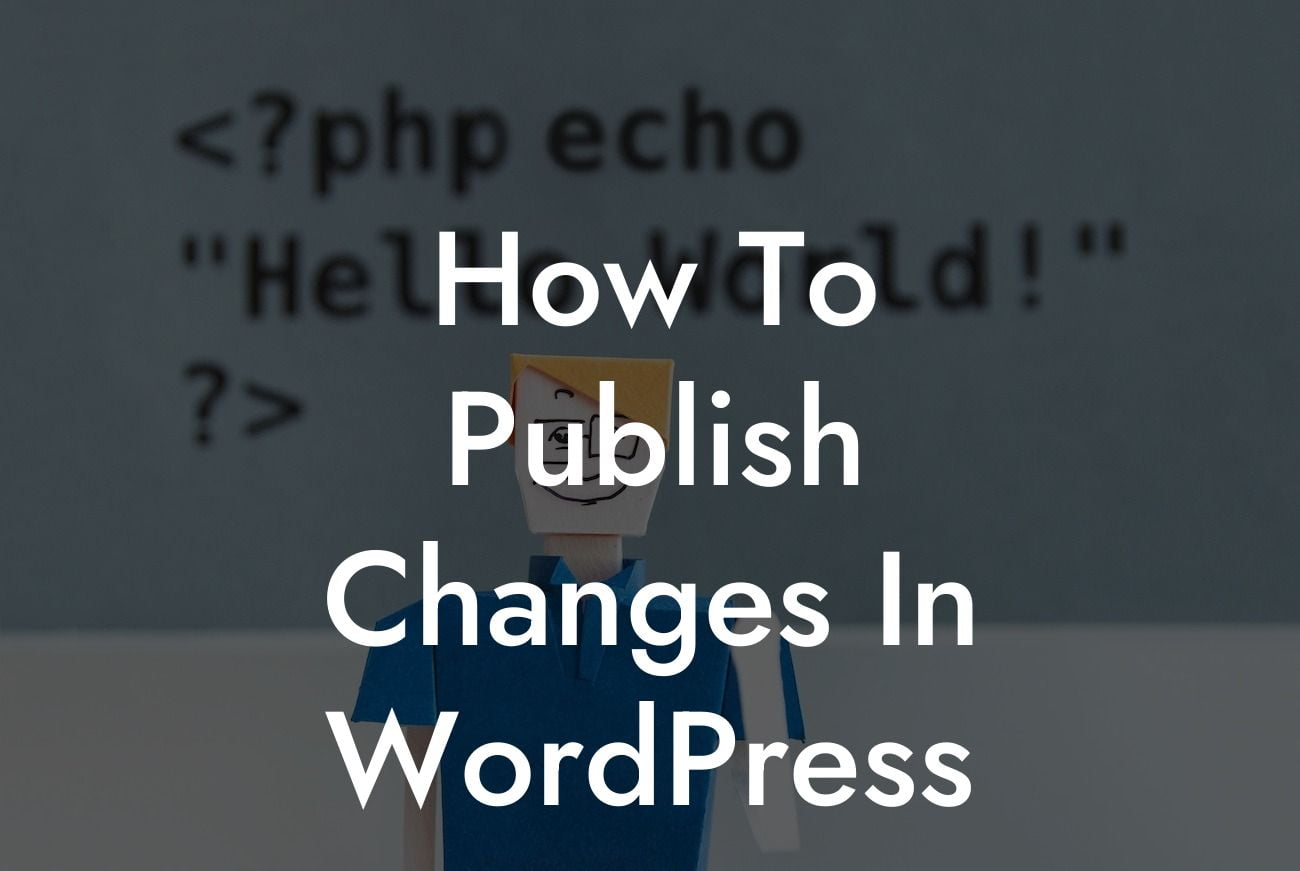Do you find yourself struggling to publish changes in WordPress? Are you unsure of the best practices for updating your website without disruptions? Look no further! In this comprehensive guide, we'll walk you through the step-by-step process of publishing changes in WordPress, ensuring smooth transitions and improved online performance. Whether you're a small business owner or an ambitious entrepreneur, DamnWoo's extraordinary plugins are your secret weapon for elevating your online presence and supercharging your success.
Publishing changes in WordPress may seem like a daunting task, but with the right approach, it can be seamless and effortless. Let's dive into the detailed steps you need to follow:
1. Plan Your Changes:
Start by outlining the modifications you want to make on your WordPress website. Whether it's updating content, changing themes, or adding new features, proper planning is crucial. Determine the scope of your changes, create a timeline, and allocate resources accordingly.
2. Backup Your Website:
Looking For a Custom QuickBook Integration?
Before making any changes, it's essential to create a backup of your website. This ensures you have a safety net in case anything goes wrong during the updating process. Numerous backup plugins are available, offering simple and automated solutions to safeguard your data.
3. Test Changes in a Staging Environment:
To minimize potential issues, try implementing and testing your changes in a staging environment. This allows you to experiment without affecting your live website. Consider using staging plugins that facilitate this process, providing a secure and controlled environment for modifications.
4. Implement Changes:
Once you're satisfied with the results in the staging environment, it's time to implement the changes on your live website. Depending on the nature of the modifications, you may need to update content, modify themes, install or remove plugins, or make adjustments to the settings. Take a cautious approach and double-check each step to avoid any unintended consequences.
5. Review and Debug:
After publishing the changes, thoroughly review your website to ensure everything is functioning as expected. Check for broken links, visual inconsistencies, or any other issues that could impact user experience. If necessary, utilize debugging tools and plugins to identify and resolve any errors promptly.
How To Publish Changes In Wordpress Example:
Let's consider a real-life example to solidify our understanding. Imagine you're a small business owner running an e-commerce store powered by WordPress. You decide to update your website's theme to enhance its appearance and performance. Following the steps above, you first plan the theme change, ensuring compatibility with your products and branding. Next, you back up your website using a reliable WordPress backup plugin. Then, you deploy the theme change in a staging environment, thoroughly test it, and make any necessary adjustments. Finally, you implement the theme change on your live website, review it for any issues, and ensure your online store is running smoothly with the updated theme.
Congratulations! You now possess the knowledge to publish changes in WordPress efficiently. By following these step-by-step guidelines, you can seamlessly update your website and enhance its functionality without unnecessary disruptions. Remember, DamnWoo is here to empower your online journey further. Explore our array of incredible plugins tailor-made for small businesses and entrepreneurs. Share this valuable guide with others who may benefit from it and stay tuned for more articles designed to supercharge your success.













